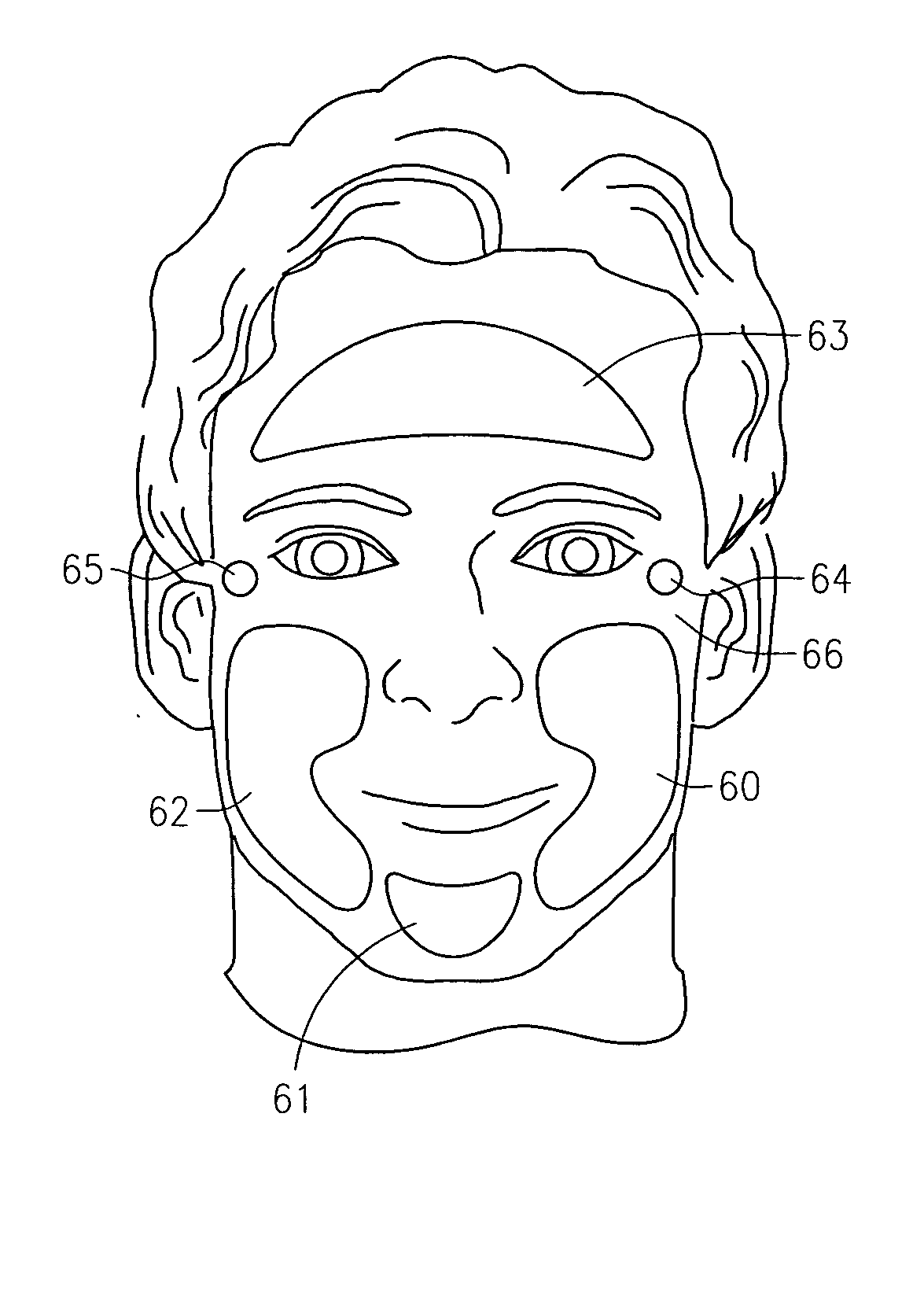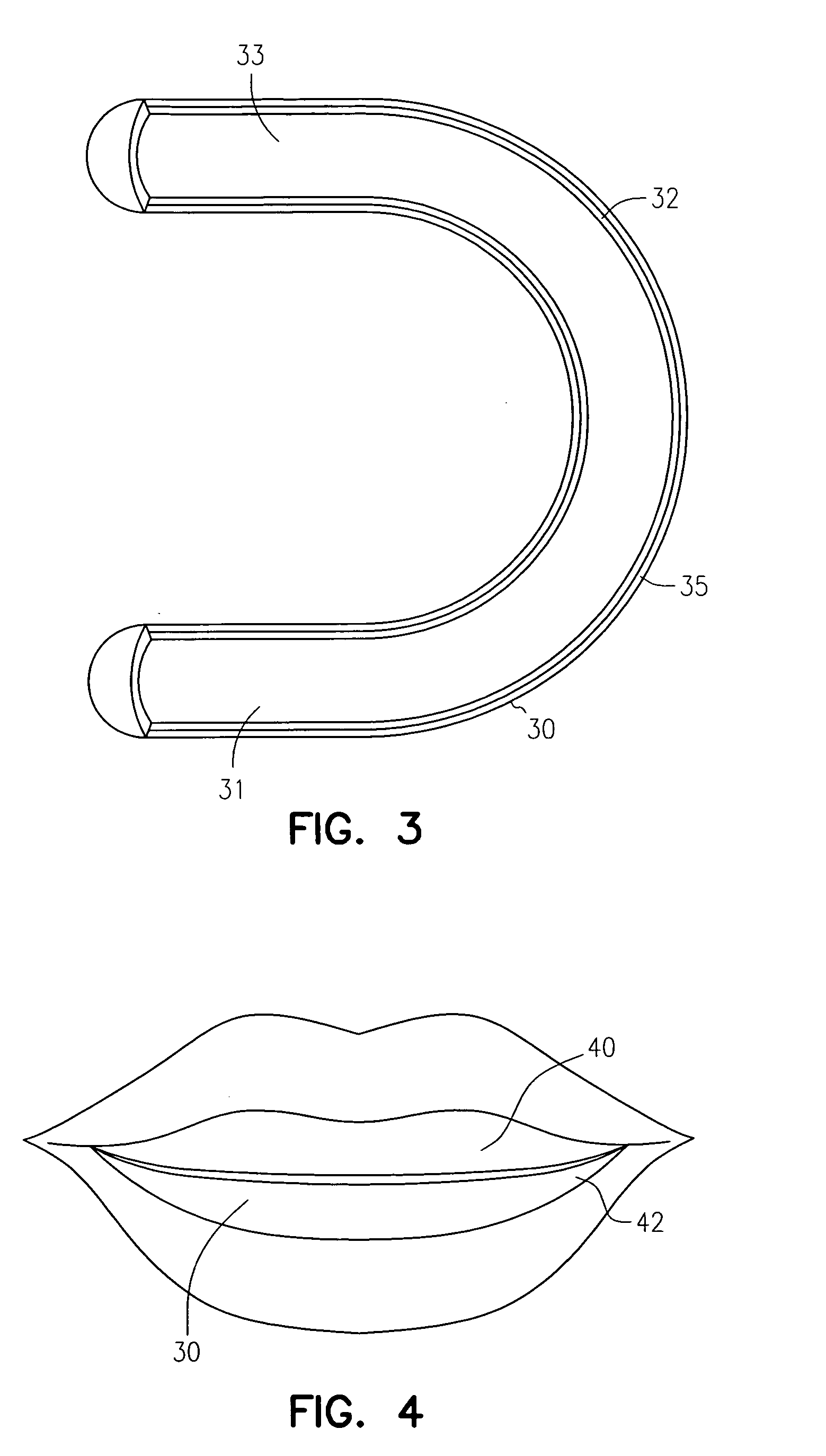Device and method for treatment of external surfaces of a body utilizing a light-emitting container
a light-emitting container and external surface technology, applied in the field of medical treatment, can solve the problems of difficult and impractical confinement of the correct amount of illumination, time-consuming, unfavorable odd shape or convoluted areas, etc., and achieve the effect of enhancing the therapeutic
- Summary
- Abstract
- Description
- Claims
- Application Information
AI Technical Summary
Benefits of technology
Problems solved by technology
Method used
Image
Examples
example
Six subjects with 47 actinic keratosis were selected for treatment. Photographs were obtained prior to treatment. The treatment area was swabbed with 20% ALA and occluded for 45-90 minutes. A light patch was then applied for 40-90 minutes. Instructions were given to protect the area from light for 72 hours. Patients were assessed for clearance of lesions, post-op pain and side effects at day 1, 7 and 14 and 3 or 6 months.
Results: Patients had no sensation at time of treatment. Two to twenty-four hours post treatment patients felt the sensation of sunburn with associated erythema and superficial erosions. The erosions healed within 2 weeks. Preliminary data shows clearance of 68% of the lesions at last follow up.
Conclusion: This pilot study demonstrates complete clearance of actinic keratosis at 2 months follow up after PDT treatment with short contact ALA and a novel light patch.
Actinic keratosis are premalignant lesions of the skin caused by excessive sun exposure. They appe...
PUM
 Login to View More
Login to View More Abstract
Description
Claims
Application Information
 Login to View More
Login to View More - R&D
- Intellectual Property
- Life Sciences
- Materials
- Tech Scout
- Unparalleled Data Quality
- Higher Quality Content
- 60% Fewer Hallucinations
Browse by: Latest US Patents, China's latest patents, Technical Efficacy Thesaurus, Application Domain, Technology Topic, Popular Technical Reports.
© 2025 PatSnap. All rights reserved.Legal|Privacy policy|Modern Slavery Act Transparency Statement|Sitemap|About US| Contact US: help@patsnap.com



